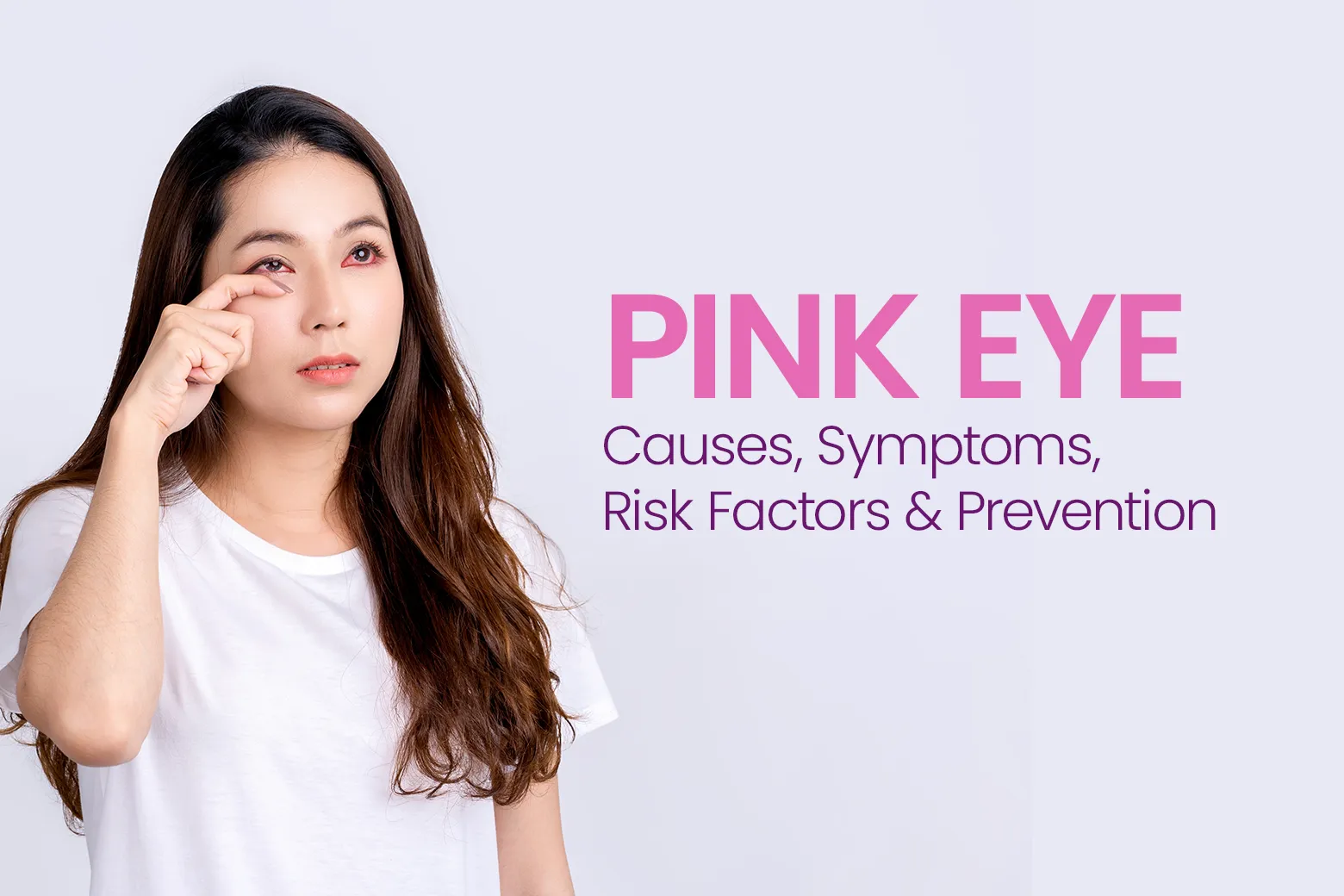‘Pink eye’ is primarily an inflammation of the conjunctiva, which is the transparent membrane that lines the eyeball and eyelid. Due to swelling and irritation, the thin blood vessels become reddish and visible, giving the appearance of a pinkish colour in the eyes. It is also known as ‘conjunctivitis’.
It is contagious and is usually caused by a viral, or in some cases by a bacterial infection. If observed in children, it may be due to an ‘incompletely opened tear duct’.
Though it spreads quickly from person to person, this infection subsides after getting treated correctly, and is not going to impair the vision, so do not feel overly anxious or stressed.
Symptoms to watch out for:
- Redness in one or both eyes
- Itchiness or irritation in one or both eyes
- Sensitivity to light i.e. photophobia
- Discharge from the eye/s which dries during the night into a crusty layer. This makes opening one’s eyes uncomfortable in the morning.
- Stiffness in the eyes
- Teary eyes
When to see the doctor?
As soon as you observe the above symptoms, speak to your doctor and get a consultation.
If there is pain, blurriness of vision or excessive discomfort that does not settle within 24 hours, ensure that you meet your doctor in person for correct diagnosis, as it may also be caused by other eye-related issues.
Risk factors for pink eye include:
- Exposure to someone infected with the viral or bacterial form of conjunctivitis
- Exposure to something you’re allergic to, for allergic conjunctivitis
- Using contact lenses, especially extended-wear lenses
READ: Neonatal Conjunctivitis And Tips To Prevent It
Preventing the spread of pink eye:
- Drink only boiled water and consume home cooked meals
- Avoid touching your eyes in case you have been in close proximity or have shaken hands with one or more people
- Wash and sanitise your hands at regular intervals through the day
- Do not share your napkins, handkerchiefs or towels
- Take medicines or eye drops only on prescription. Self-medication may be harmful, and unnecessarily delay or hamper your healing
- In Newborns: Newborns’ eyes are susceptible to bacteria present in the mother’s birth canal. These bacteria often cause no symptoms in the mother. In some cases, these bacteria can cause infants to develop a serious form of conjunctivitis known as ophthalmia neonatorum, which needs immediate treatment to preserve sight.



